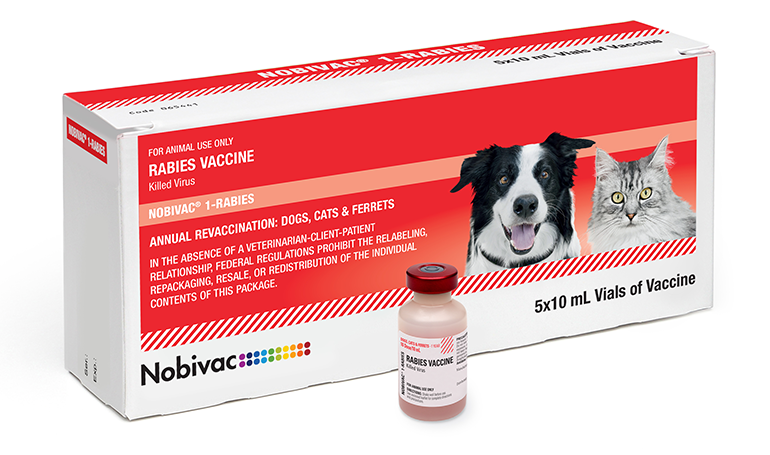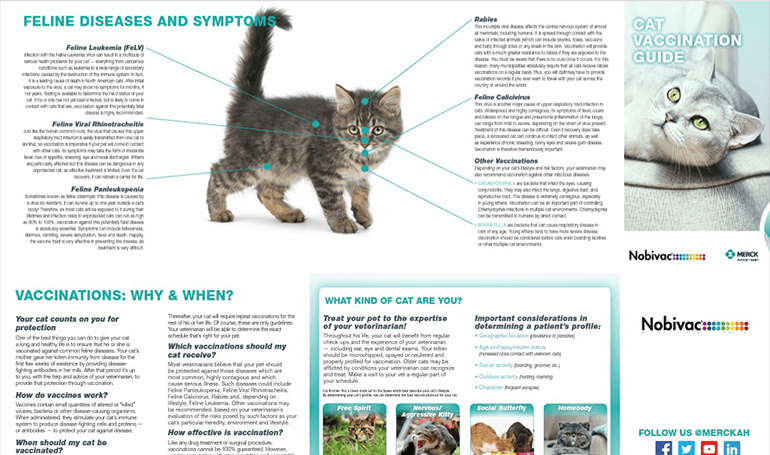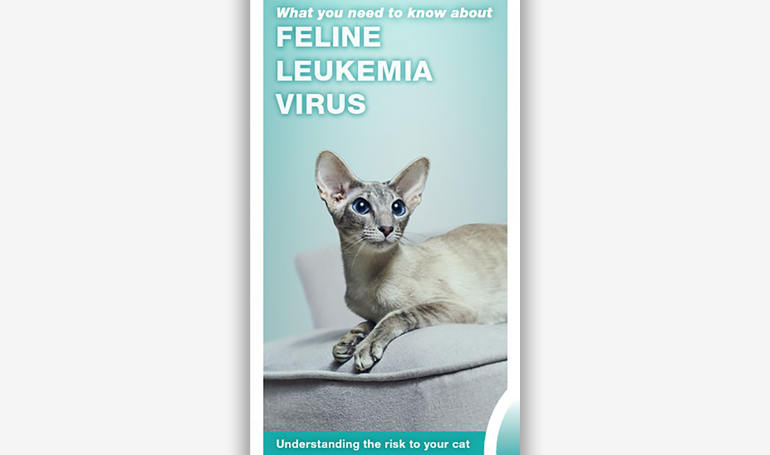

Feline Rabies
Cats, humans and other warm-blooded animals are all vulnerable to rabies and its fatal outcome.
Overview | Transmission | Signs | Risk Factors | Outcomes | Spreading | Diagnosis | Vaccines | Resources
Disease Overview
Rabies attacks the nervous system, with fatal results once clinical signs appear.
Rabies is present in many countries worldwide, although a number of countries are free of the disease due either to successful elimination programs or quarantine regulations. Rabies is maintained in wildlife, even where it has been contained in domestic animals.
FELINE RABIES FAST FACTS
- Cats are the #1 species for reported rabies cases in the United States, far exceeding all other domestic animals.28
- Most human exposures result from contact with domestic animals.
- Worldwide, more than 59,000 people, many of which are children, die from rabies each year.70
TRANSMISSION
Rabies is usually spread through saliva into tissue
- From the bite of a rabid animal
- If infected saliva enters the body through a cut or comes in contact with the eyes, nose, or mouth
CLINICAL SIGNS
- Anxiety
- Confusion
- Slight/partial paralysis
- Excitation
- Agitation
- Aggression
- Hypersalivation
- Difficulty swallowing
ANIMALS AT RISK
- Pets that live or play outside
- Pets that interact with wild animals
MORBIDITY THREATS
Furious Form:
- The classic ‘mad-dog syndrome,’ can be seen in all species, including cats. Rarely evidence of paralysis during this stage.
- Infected animal becomes irritable and may viciously and aggressively use its teeth, claws, horns or hooves.
- Animals commonly swallow foreign objects, eg, feces, straw, sticks, and stones.
- Rabid domestic cats can attack suddenly, biting and scratching viciously.
- As the disease progresses, muscular incoordination and seizures are common. Death results from progressive paralysis.
Paralytic Form:
- Manifest by ataxia and paralysis of the throat and masseter muscles.
- Profuse salivation and the inability to swallow are often present.
- These animals may not be vicious or attempt to bite.
- The paralysis progresses rapidly to all parts of the body, and coma and death follow in a few hours.
SPREADING DISEASE
- The virus travels via the peripheral nerves to the spinal cord and ascends to the brain.
- After reaching the brain, the virus travels via peripheral nerves to the salivary glands.
- If an animal is capable of transmitting rabies via its saliva, virus will be detectable in the brain.
- Virus is shed intermittently in the saliva. It is possible for domestic cats to shed virus for several days before onset of clinical signs.
DIAGNOSIS
Clinical diagnosis is difficult, especially in areas where rabies is uncommon, and should not be relied on when making public health decisions.
In the early stages, rabies can easily be confused with other diseases or with normal aggressive tendencies. Therefore, when rabies is suspected and definitive diagnosis is required, laboratory confirmation is indicated.
Merck Animal Health Vaccines

NOBIVAC® 1-RABIES
Provides protection against rabies in dogs, cats and ferrets for at least one year.
ALSO AVAILABLE IN OTHER FORMULATIONS
Professional Resources and Educational Materials
Keep your clinic and staff informed and aware of diseases and outbreaks.

Feline Vaccination Guide
Brochure
A guide to help your pet parents understand common feline diseases and the importance of customizing vaccination for their pet’s unique lifestyle.

Feline Leukemia Virus
Brochure
Educate your clients about FeLV with this easy to share brochure.
No items to show.

